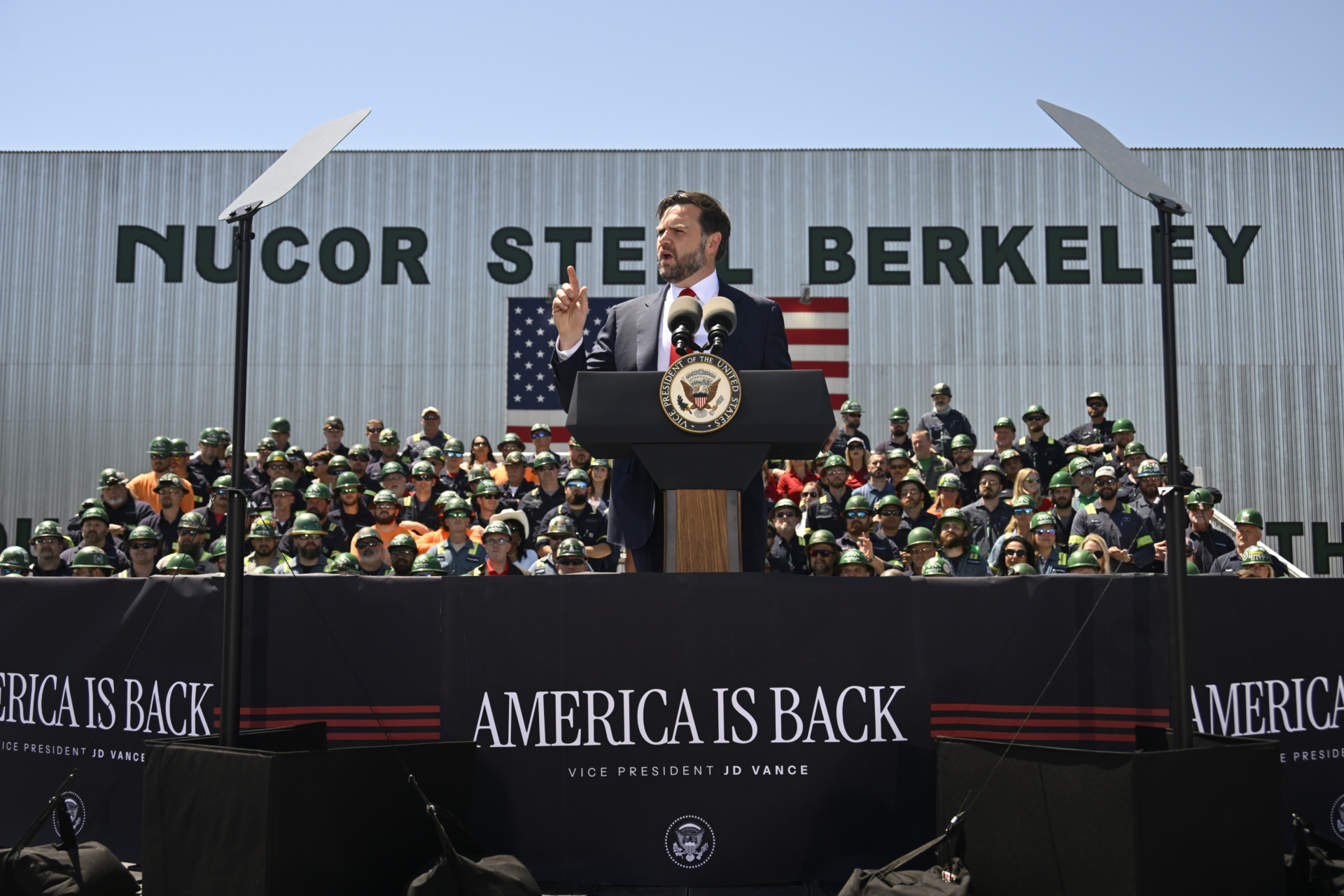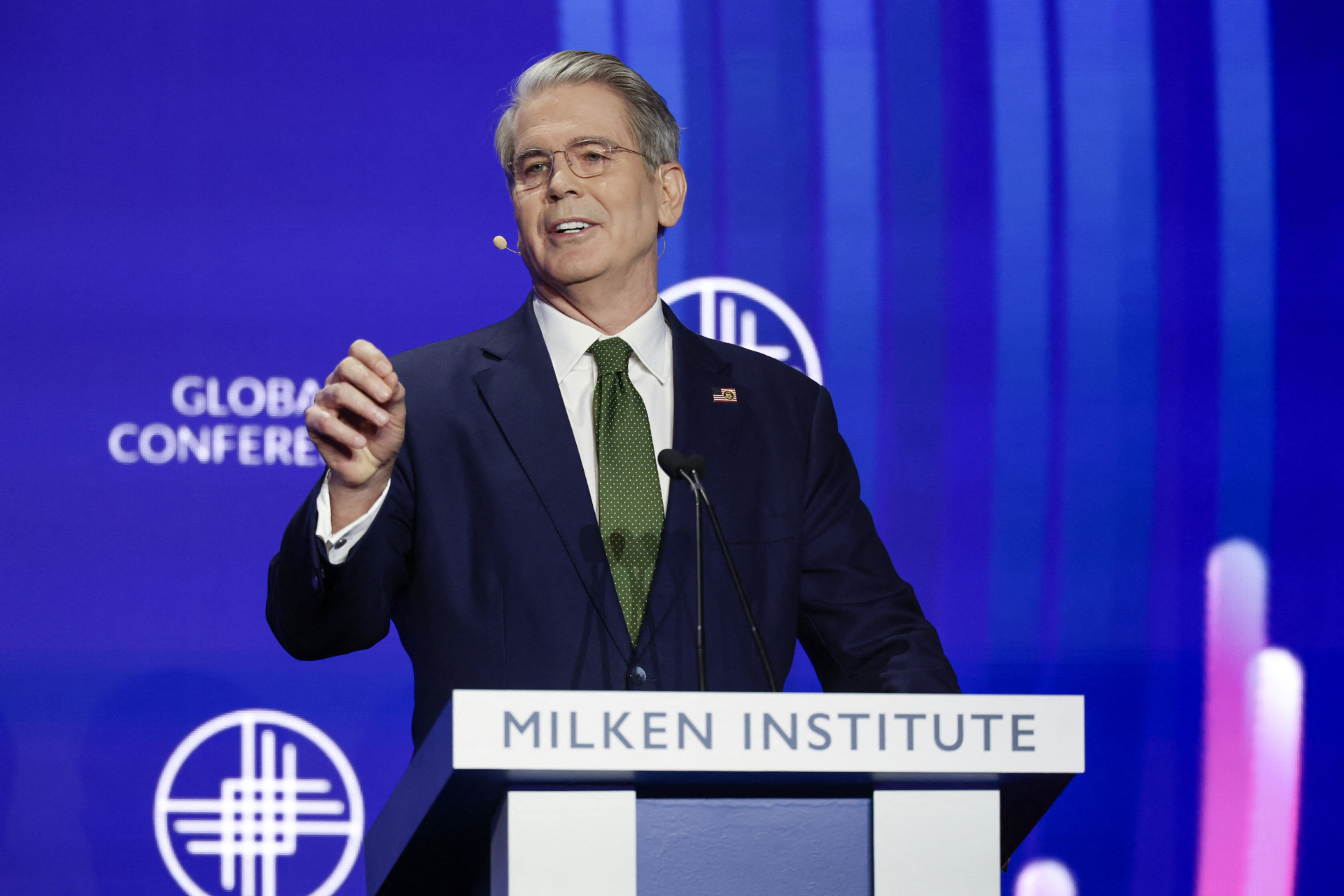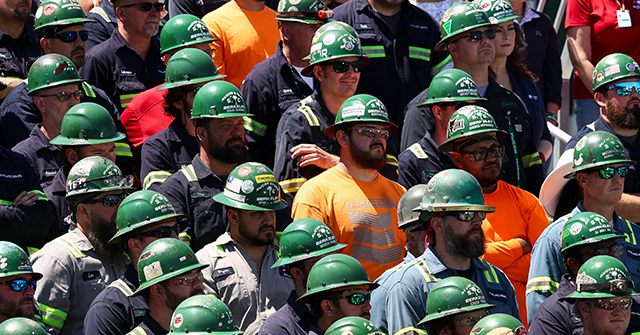Trump’s golden age: an industrial era or abundance
This week, the new economic doctrine of the United States focused thanks to A couple of speeches by vice president JD Vance and Treasury Secretary Scott Besent.
From a steel factory in South Carolina to a Finance Summit in Beverly Hills, Vance and Besent delivered matching messages to two different audiences: the working men and women who build the United States and the capital class that once discard it. What they said, in a different language and in different rooms, was the same: The era of the managed decline is over. We are entering the era of industrial abundance.

Vice President JD Vance speaks with steel workers in Nucor Steel Berkeley in Huger, SC, about the United States manufacturing rebirth on May 1, 2025. (Peter Zay/Anadolu through Getty Images)

The Secretary of the Treasury, Scott Besent, speaks at the 28th Annual Global Conference of the Milken Institute at the Beverly Hilton in Beverly Hills, California, on May 5, 2025. (Patrick T. Fallon/AFP through Getty Images)
This is not brand. It is not messages. It is political, with acute edges and real consequence for business, capital and the global economy. Washington is no longer neutral about where things are done. It is picking a side. And for the first time in a generation, that side is the American industry.
JD Vance: Man of Steel
Vance did not defend tariffs as a temporary interruption: celebrated They as a long -term deliberate tool to remodel global supply chains.
“We are going to make it more difficult to manufacture in China,” Vance said in Nucor Steel. “Isn’t it so bad? No. That is exactly what we want to do.”
There was no ambiguity. Without hedge. Tariffs, in the hands of Vance, are not tactical, are strategic. Its purpose is Redibechar the Global Production Map Around the industrial core of the United States. Not as a phase, not as a negotiating ploy, but as the new baseline.
But Vance did not stop at defense. He sacrificed a logic. He told the story of trying to fill a recipe for infection of his son’s ear and find the empty pharmacy shelves. Without amoxicillin. The United States, inventor of the antibiotic era, could not supply their own children basic medicine. The Covid Pandemia had revealed the same truth: masks, dresses and fans came from China. The consequence of relocation was just an economic decrease, it was vulnerability.
If the United States is going to compete, you have to produce. That means Restoration of the industry capacity by industry– Steel, semiconductors, antibiotics, critical minerals. That’s what tariffs are for. That is why there are tax credits. That is deregulation.
And it is already happening.
Vance pointed out 22 percent increase in business investment In the first quarter, a surprising figure. Not driven by mood. Non -speculative. “Now we are 101 days in the Industrial Renaissance,” he said. “It’s real.”
Besent is going to Beverly Hills
Besent, speaking at the Milken Institute’s global conference in Beverly Hills, cools the institutional mirror of Vance’s vision. He told the world’s financial elite that the United States is becoming the natural home for productive capital, observes that it is cheaper, but because now it is the most Safe, scalable and aligned with policies.
Hello, he spoke of industrial abundance not as a political objective, but as architecture: A system where tariffs, tax reform, regulatory discipline and energy policy work together to attract capital to the real economy. Not on spreadsheets. Not in the repurchases. In factories. In capacity. In things that last. His treasure is working to make that structure lasting and, in his words, permanent.
For decades, US executives were told to do things was obsolete. That design was enough. That software would take us. Vance and Besent are burying that illusion. Instead, they are building something more punished: a National economy defined by resilience, sovereignty and scale.
Duration of its Nucor tour, Catch pointed out the 14 monitors control panel and called it a spacecraft. This was nostalgia; It was the future high -tech manufacture, driven by real skills, real people and real assets. The message of corporate America is simple: If you want to direct the 21st century, it will be better to be built in the United States.
What is taking shape is not a tariff wall or a subsidy binge. It’s a Strategic Industrial Basebacked by politics and finished by belief. Companies such as Intel, Micron, Nucor, Exxonmobil and Modern are already adjusted: memorandum to quarterly noise, but to structural change. Capital does not flow to the cheapest labor, but to the most aligned geography. That geography is America.
This is The doctrine of industrial abundance: A fully integrated policy regime that takes the central strengths of the United States (cheap energy, deep capital markets, legal stability, quality of the workforce) and makes them a magnet for the global industry. We no longer wonder that the United States can compete in manufacturing. We are preparing to lead it.
Executives who cling to the play of plays in a row during the last three decades may not see it yet. But factories are increasing. Permits accelerate. The investment is rising. Supply chains are reigning. And the White House is not looking liabilities. He is driving the turn.
This is not just the end of globalization as we knew it. It is the beginning of something better.
And this time, it is being built in the United States.




